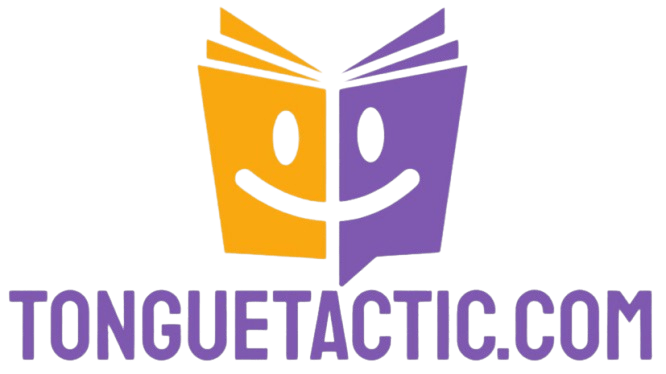the evolution of language courses in the digital age
In today s fast-paced world, you ll find the landscape of language learning transforming. This change is all thanks to the relentless march of technology.
Digital language courses are stepping in to make learning not just accessible but also engaging and interactive.
Get ready to explore how technology is transforming the way we learn languages! This article discusses the impact of technology on language instruction, comparing conventional approaches with their digital counterparts. You ll discover the unique benefits and challenges that accompany this shift.
We will also explore the future of language education, examining the innovations that lie just over the horizon.
Contents
- Key Takeaways:
- The Digital Age and Language Learning
- Traditional Language Courses vs. Digital Language Courses
- Benefits of Digital Language Courses
- Challenges of Digital Language Learning
- Get Ready! The Future of Language Courses in the Digital Age
- Frequently Asked Questions
- What is the evolution of language courses in the digital age?
- How have technology and the internet impacted language courses?
- What are the advantages of taking language courses in the digital age?
- Have there been any challenges in the evolution of language courses in the digital age?
- How has the use of artificial intelligence (AI) impacted language courses?
- Are there any emerging trends in language courses in the digital age?
Key Takeaways:
Here are the key takeaways from our discussion:

- The digital age has revolutionized language learning, making it more accessible and convenient.
- Traditional vs. digital language courses have different teaching methods, but both have their advantages and challenges.
- The future of language courses in the digital age holds potential for innovations and advancements, potentially impacting the education system.
The Digital Age and Language Learning
The digital age has revolutionized language learning, seamlessly blending technology with the evolution of communication and shaping the future of language courses into a more inclusive and efficient environment.
As artificial intelligence tools advance, they present innovative solutions that enhance global understanding and digital literacy while effectively addressing communication barriers and cultural shifts.
This emerging linguistic landscape nurtures an equitable approach to language acquisition, promoting clarity and precision through various resources, including writing assistants and interactive platforms.
Impact of Technology on Language Courses
Technology has profoundly transformed language courses by incorporating AI systems that offer real-time suggestions, elevating your overall learning efficiency.
With interactive apps and writing assistants at your fingertips, these tools enhance engagement and cater to your unique learning needs, enriching your educational experience.
The integration of personalized learning pathways means you receive customized feedback on your writing skills, vocabulary usage, and grammar, all tailored to your individual progress.
These advanced technologies not only simplify the learning process but also promote digital literacy, equipping you with essential skills to navigate today’s communication platforms effectively.
By leveraging the power of data analytics, educators can gain valuable insights into your performance. This enables them to refine their instructional methods and materials, ensuring you thrive in a supportive environment that addresses your specific challenges and goals.
Traditional Language Courses vs. Digital Language Courses
Traditional language courses tend to lean on conventional teaching methods, which can occasionally fall short when it comes to accessibility and engagement.
In contrast, digital language courses harness technology to simplify the complexities of learning. By integrating digital tools, these modern courses not only tackle common biases in education but also foster a more inclusive environment for language learners.
Comparison of Teaching Methods
When comparing teaching methods, traditional language instruction often relies on direct teaching, while digital language courses harness interactive and immersive experiences to cultivate mutual understanding and clarity in communication.
Traditional approaches typically emphasize rote memorization and structured lessons, which can sometimes dampen student engagement.
In contrast, digital platforms utilize a variety of techniques like gamification, multimedia resources, and real-time collaboration tools to create a more dynamic learning environment.
Through these innovative methods, you can connect with peers from diverse backgrounds, allowing for contextual learning that mirrors real-world scenarios. This engaging interaction not only enhances your language acquisition but also fosters a stronger sense of community.
By practicing conversational skills in a supportive setting, you can experience authentic communication.
Benefits of Digital Language Courses

Digital language courses provide many benefits. They offer unrivaled convenience and accessibility.
You have the freedom to engage with content at your own pace, making the learning process uniquely yours.
Interactive learning experiences are designed to deepen your understanding and enhance the retention of language skills. By leveraging technology, these courses tackle biases often found in traditional education, ensuring that learning opportunities are equitable and available to everyone.
Convenience and Accessibility
Convenience and accessibility define digital language courses, enabling you to engage in global communication without the constraints of time or location.
These courses use technology to break down traditional barriers, allowing you to connect seamlessly with instructors and fellow learners from all corners of the globe.
By utilizing interactive platforms and rich multimedia resources, you receive a more engaging and customizable learning experience tailored to your needs.
This evolution in language education expands your opportunities and creates an inclusive environment, allowing you to engage in conversations that transcend geographical boundaries.
As a result, you ll be better equipped to navigate diverse cultures and perspectives an essential skill in our ever-connected world.
Interactive Learning Experience
The interactive learning experience provided by digital language courses boosts your involvement, employing AI systems and real-time feedback to enable you to take an active role in your education.
These cutting-edge methods make learning a new language enjoyable and tailor the experience to your learning style through personalized pathways. For example, gamification adds exciting elements like challenges and rewards, motivating you to progress through levels as you master new skills.
Smart learning systems that adjust to your progress evaluate your proficiency and ensure you receive the targeted support you need.
Such techniques create an immersive environment that captivates you, transforming traditional study methods into dynamic journeys toward achieving fluency.
Challenges of Digital Language Learning
Despite these fantastic benefits, it’s essential to recognize the challenges that come with digital language learning.
Staying motivated and disciplined is key to your success! Without the structure of a traditional classroom, it’s easy to lose momentum and stall your progress.
Technical difficulties can complicate your learning journey, introducing layers of complexity that may hinder your experience.
Motivation and Self-Discipline
To cultivate motivation and self-discipline, you can adopt specific strategies such as effective goal-setting. This brings clarity and direction to your studies.
By breaking down your language acquisition journey into smaller, manageable milestones, you create opportunities to celebrate each achievement. These small victories boost your morale and reinforce your commitment.
Embracing technology can provide additional support. Numerous apps and platforms offer innovative ways to track your progress, schedule study sessions, and remind you of your objectives.
These tools keep you accountable and enhance your engagement, ensuring you remain focused on your language learning pursuits.
Don t let these challenges hold you back take charge of your learning journey today!
Technical Difficulties

Technical difficulties can create significant hurdles in your digital language learning journey, impacting both accessibility and your engagement level.
When you encounter issues like sluggish internet connections, software glitches, or audio and video malfunctions, it s easy to feel frustrated. This frustration saps your motivation and disrupts the flow of instruction and practice.
To tackle these challenges effectively, institutions can offer strong technical help and ensure courses are designed on user-friendly platforms. Providing tutorials that guide you through common troubleshooting can enable your learning experience.
Online resources such as forums and dedicated help desks can build a supportive community, assisting you in navigating technical obstacles and enhancing your overall online learning journey.
Get Ready! The Future of Language Courses in the Digital Age
The future of digital language courses is about to change dramatically, driven by innovations and advances in technology and AI capabilities.
These developments reshape the landscape of communication and revolutionize how you engage with learning.
Innovations and Advancements
Innovations in technology, particularly AI systems computer programs that can learn and adapt are reshaping language courses.
These intelligent systems analyze your individual learning patterns, crafting tailored lessons that adapt to your unique pace and style.
Technologies like virtual reality and interactive software create immersive environments, making the learning process effective and genuinely engaging.
Speech recognition tools are transforming pronunciation practice by providing instant feedback, allowing you to refine your skills with precision.
As a result, these innovations deepen your understanding of the language and keep you motivated, transforming your educational journey into a dynamic and enjoyable experience.
Potential Impact on the Education System
The potential impact of digital language courses on the education system is transformative, promising to reshape curricula, teaching methodologies, and learning outcomes in response to evolving cultural dynamics.
As technology continues to advance, educators will need to integrate digital resources into their teaching platforms. This integration can lead to a more personalized learning experience tailored specifically for students like you.
The automation of language assessment tools offers the advantage of real-time feedback, enabling you to engage more actively with your progress.
Schools are increasingly likely to adopt hybrid models, blending traditional classroom techniques with online components to enhance accessibility and engagement. This shift caters to diverse learning styles and equips you for a globalized world where digital fluency is critical.
Frequently Asked Questions
Here are some common questions about language courses in the digital age.
What is the evolution of language courses in the digital age?

The evolution of language courses in the digital age refers to the changes and advancements in how languages are taught and learned, highlighting the impact of technology on language courses.
How have technology and the internet impacted language courses?
Technology and the internet have made language courses more accessible, interactive, and convenient. With online tools and resources, students can learn at their own pace and connect with language speakers globally.
What are the advantages of taking language courses in the digital age?
Some advantages include flexibility in scheduling, access to a wide range of resources, and the ability to connect with native speakers for practice and immersion.
Have there been any challenges in the evolution of language courses in the digital age?
One main challenge is maintaining quality instruction. Teachers and students must be engaged in the learning process.
Proper training and support are essential for effectively using technology.
How has the use of artificial intelligence (AI) impacted language courses?
AI has transformed language courses by offering personalized learning experiences. For example, programs can adjust to a student s level and pace.
AI also provides accurate assessment and feedback, which enhances the overall learning experience.
Are there any emerging trends in language courses in the digital age?
Exciting trends are emerging in language education. Virtual and augmented reality create immersive learning experiences.
Social media and gamification are also being integrated into language learning. Plus, online language platforms and apps are on the rise.





